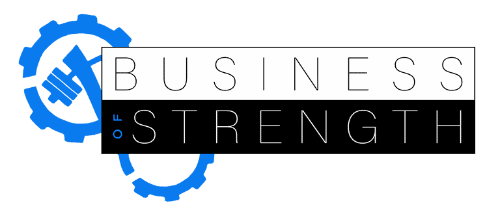The Case Against the Big 3 Lifts: How to Get Strong as a Bull Without Feeling Like You Got Hit with a Mack Truck
I can hear it now, the big, tough strength coaches “yelling at me” through their computer screen.
They’re saying, “strength is the hierarchy of athletic development. You have to lift heavy, chalk up, and hear the weights bang!”
This is where the term strength coach was born. I believe coaches use their preconceived biases as a safety net when they don’t fully understand the bigger picture.
In the realm of athletic performance, you should strive for, well performance.
How does one achieve optimal performance?
One must treat the body as it was designed…human first, athlete second.
The human body is not the same on both sides.
Look at the picture below.
What do you see? What is different on the right side than the left.
This is what I see…
- Right side looks way bigger
- Right side goes further back
- Left side just looks weaker (less muscular fibers)
- Left side looks flatter
- The aorta is definitely more on the left side
- The curve of the right ribs is definitely different than the left because of the liver
I think it’s safe to say, that at least from this one picture, the right diaphragm looks to be bigger than the left and therefore most likely stronger.
We also know that our internal organs are not symmetrically arranged.
The right side of the body is home to the liver and the liver is huge.
The heart sits on the left side.
The liver sits underneath the diaphragm making the right side sit a bit higher, which causes the muscle fibers to shorten on the right.
The heart sits on top of the left diaphragm which depresses that diaphragm and lengthens those muscle fibers.
We all know that shortening muscle fibers makes it easier to contract a muscle and lengthening them makes it harder. It’s a whole lot easier to bicep curl a ton of weight if I am only going halfway down.
We could also mention the differences between the left side and right side of the brain that throws a greater bias onto the right side of the body or the fact that we have three lobes of lung on the right and only two on the left but that’s really just icing on the cake at this point.
Research in medical institutions has shown, everyday you take upwards of 20,000 breaths.
This means that asymmetrical diaphragm is going to contract upwards of 20,000 times per day. At this point, it should be easy for you to realize how an imbalance is going to form if this isn’t managed.
During every breath, there will be a slight twist over to the right side of the body and slowly, over time, the right side will grow dominant as the left side grows weak.
I’m not here to say that performing bilateral exercises are wrong. No.
My job is to help you look objectively at how the body was actually designed to move.
There is a place for everything, however, you must also take everything into consideration.
When we strip away all of our biases, preconceived notions, and external influences, ask yourself,
“Why do I lift weights and have my clients do the same?”
Don’t kid yourself, the answer is strength and here’s what we know about it.
STRENGTH = FORCE.
As most coaches should know, the term “strength” is extremely broad. Some understand strength is the highest amount of weight lifted in any particular exercise.
When an athlete or individual is considered “strong”, he is usually described as having a very high one-rep max in one of the three main lifts (bench, squat, deadlift).
Contrary to your belief, the most rudimentary definition of strength is defined as the ability to apply specific force.
Force is a term from physics that describes a push or pull of a certain magnitude in a certain direction. In a barbell squat, you have to “push” the weight from the bottom of the squat position in a vertical motion to end up in a standing position again.
To perform this action, force must be applied. Moreover, you also have to apply force to a glass of water in order to pick it up.
Both require force, yet, very different amounts of it.
Keeping things simple, it can be safe to assume that strength and force essentially mean the same thing.
When you apply force to an object, you are applying strength to lift it.
However, that’s why it’s NOT safe to say that strength solely describes the heaviest amount of weight someone can lift.
Heavy squatting, sprinting, and jumping are three unique forms of exercise that each individually require different aspects of force.
Bilateral vs. Asymmetrical Force
We understand the body is imbalanced and strength equals force, now what?
Great question.
Simply put, applying force in planes of motion that are conducive for athletes and adults to perform optimally is a great starting point.
You can now choose to utilize exercises requiring more coordination to overload a movement from a motor control standpoint.
The level of coordinative control can influence how much global strength development is achieved and overall movement mastery.
I get it, you still want to lift heavy weights and hit massive PR’s. As do I.
However, you also want to be able to walk and move around the next day without feeling like you got it by a Mack truck on the freeway.
The 5 Step Process That Will Allow You to Continue Getting Stronger without Feeling Like
Step 1: You MUST Pick “smarter” Exercises.
Coaches, athletes, and avid lifters, please stop attaching your ego’s to the BIG THREE lifts.
As mentioned above strength = force. If you can get stronger in plane conducive movements that will make you feel better, why wouldn’t you?
Examples of Main Movements:
Focus on movements that work congruently with your body and optimally work the rib cage, pelvis, single leg stance, unilateral, and contralateral patterns.
Press
Viking Press, Landmine Press, SA press variations, dumbbell variations, KB Press Variations etc.
Deadlift
RDL’s, Unilateral RDL variations, trap bar deadlifts, sumo deadlifts, dumbbell variations etc.
Squat
Front squat variations, feet elevated, pelvic centric narrow stance squats, unilateral barbell work, unilateral dumbbell work.
Step 2: Cut Out All the Wasted Junk Accessory Volume and Focus on working at the Minimum Effective Dose. (See the Stress Scale for Athletes Article)
This means doing just enough work to drive the adaptation and no more.
In order to achieve this, you must always utilize open ended sets or reps at a set percentage or RPE with a strict rest time.
For example, you are doing a safety bar reverse lunge for 6 sets of 4 each leg with a 3 sec tempo. Once, you begin to feel fatigue or the RPE drops, you can perform an AMRAP (as many reps as possible at the RPE/Percentage).
Step 3: Break Up Your Training Days into Output vs. Sensorimotor Blocks.
Straight up, I stole this from Kyle Dobbs of Rebel Performance.
These guys do a fantastic job at explaining how to organize your training, feel great, and still hit PR’s.
Output: This is always going to be the main lift of the day. It could be some form of a squat, deadlift or press and it was time to hit some good numbers.
This is where you pick a variation of the Big 3 Lifts and you try to PR on them.
Sensorimotor: This refers to very different and laser focused accessory work. This is where things like a front foot elevated zercher loaded split squat lived. Or a half-kneeling 1 arm landmine press. Things that are all about low load, going slow and feeling exactly what you want to feel.
Step 4: PRIMED vs. WORK Days
The best way to describe this is with music.
You know those training sessions where you are listening to more mellow music and just putting in the work? That’s a WORK day.
However, there are those days, you feel good, and you just play heavy metal or rap and GET PRIMED to lift some serious weight.
The number of WORK day sessions should far exceed the number of PRIMED sessions. You need to reserve that intensity for special occasions and not go there too often.
Step 5: Perform Structured Aerobic Based LIS and LITT Sessions
Aerobic work will enable you to recover from higher interval, a-latic based work.
When executed correctly, it helps drive recovery, buys you low-level aerobic adaptation, increases your work capacity, and gives you a better off switch.



